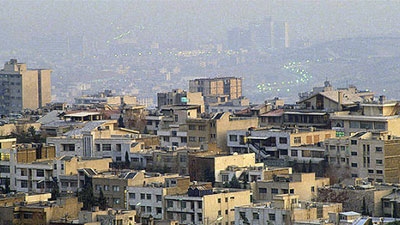With more than half of the world’s population already living in urban areas, and that percentage expected to rise to 75 percent by 2050, it is clear that the path to sustainable development must pass through cities. But exactly how cities should organize themselves to advance green growth for all and improve the day-to-day lives of residents remains open to debate.
A recent two-day workshop at the World Bank focused on how public decision-makers – not just mayors and city councilors, but policy makers at all levels of government – can embrace the idea of “smart cities” as a way to reconcile growth and sustainability.
Inclusive, sustainable growth is necessary to achieve poverty reduction, said Abha Joshi-Ghani, urban sector manager at the World Bank.
“Cities are growth escalators, but smart cities are more than that,” Joshi-Ghani said. “Smart cities make urbanization more inclusive, bringing together formal and informal sectors, connecting urban cores with peripheries, delivering services for the rich and the poor alike, and integrating the migrants and the poor into the city. Promoting smart cities is about rethinking cities as inclusive, integrated, and livable."
Many of the needs of developing countries center on providing and maintaining modern infrastructure (roads, power plants, water treatment plants, sewage systems, transit systems). Since this built environment lasts a long time, getting the right infrastructure in place shapes a city for decades to come. Planning a city with the right infrastructure, and not merely replicating past practices that often have been haphazard, means relying more on evidence and analysis about how sustainable cities can and should grow.
The workshop brought together representatives from the private sector, multilateral development banks, governments, housing authorities, academia, and civil society organizations. All are convinced of the need for “smart cities” to become the norm in urban planning, even if everyone has a slightly different view of what constitutes a “smart city.”
One key to any “smart city,” they said, is data. Dan Hoornweg, lead urban specialist at the World Bank, noted that “data will drive analytics” as urban decision-makers grapple with the many challenges they face. (See his blog post Smart Cities for Dummies".)
The promise of “smart cities” is their ability to collect, analyze, and channel data in order to make better decisions at the municipal level through the greater use of technology. As Christopher Williams of UN Habitat pointed out, “on urban data, we are today where we were in the 1930’s on country or national level data.”
Williams and others spoke of a recent initiative by nine world cities to collect, over five years, almost 1,100 indicators of municipal services. In the end, researchers found that as good as the data were for each individual city, there were only two indicators that were common to all nine cities, meaning any comparison from one city to another would be problematic.
Best practices
For Lawrence Jones, vice president of regulatory affairs, policy, and industrial relations at Alstom Grid Inc., a “smart city” is one which is “an aggregation of different kinds of critical infrastructure enabled by information technology. … The goal is to use the “smart city” as a driver for economic development in a sustainable way.”
During the workshop, a number of examples were presented to demonstrate what “smart cities” can look like. Singapore and London have led on variable pricing for road tolls, while other European cities are moving increasingly into automated revenue collection and “e-governance.”
Yet a focus at the workshop was on how cities in lower-income countries could also take advantage of technology to improve data collection, often in real time, and thus decision-making. Rio de Janeiro, for example, is working with IBM to help city authorities manage better and make decisions more quickly, and an official from IBM told the workshop about similar initiatives in other developing countries.
Not all initiatives involve large global companies. Randeep Sudan, lead ICT policy specialist in the World Bank’s Global ICT unit, spoke about a website that ran a contest to see if a $300 house could be designed to be built in urban slum areas. The challenge, he said, was to use that platform to imagine new urban solutions, using open data and open innovation to better serve citizens. In fact, a $300 house was designed as a result.
Anticipation
A big part of designing “smart cities” revolves around anticipating and planning for growth, which often means examining the practices (and errors) of other urban areas. Websites such as City Mayors offer decision-makers worldwide a window into what has worked – and what hasn’t – in other jurisdictions. A similar initiative about urban indicators has been developed by the World Bank-supported Global City Indicators Facility.
Experts agree that denser cities, with more people using resources and services more efficiently, is a key element in sustainable development. Currently, it is estimated that while 70-80 percent of global Gross Domestic Product emanates from cities, so do 70-80 percent of greenhouse gas emissions. The concept of a “smart city” builds on statistics such as those, key indicators of a city’s success in moving to a sustainable growth path. Private sector companies such as Siemens also show how they have entered the field by developing urban indices to help decision-makers build better.
World Bank Urban Sector Manager Joshi-Ghani sees in this a key to adapting “smart city” precepts. The concept of “smart cities,” she says, is “really about good governance. It’s about giving basic services to our citizens. It’s about livability. It’s about how we are using our resources. It is how a city functions on a day-to-day basis. I think smartness is about doing more with less.”


